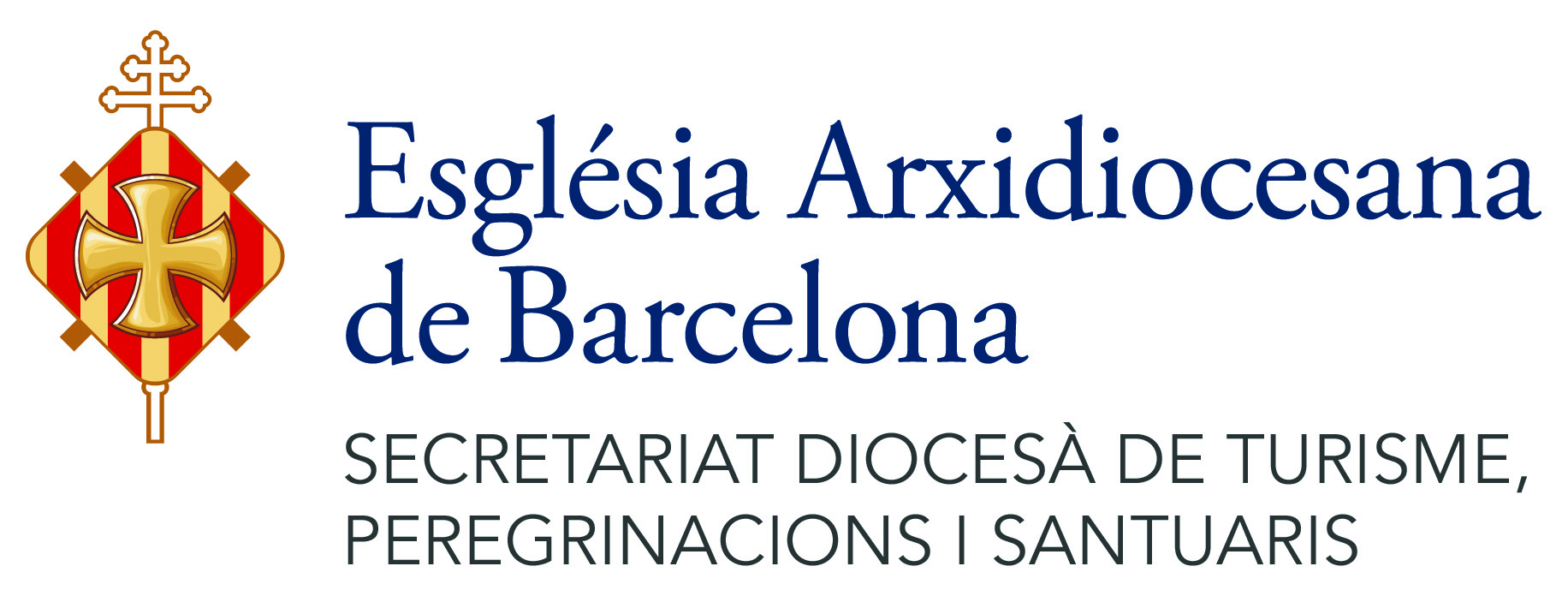Barcino Sacra
Project for the cultural management of the ecclesiastical heritage of the Archbishopric of Barcelona
Barcino Sacra is a cultural project of the Archbishopric of Barcelona that aims to facilitate access to the Church’s heritage, explaining it in all its dimensions, in a reasoned and comprehensive way.
Barcino Sacra highlights the values and purpose of the heritage, pedagogically, in order to favour personal, intellectual and spiritual growth of those who wish to approach it.
Barcino Sacra is committed to the preservation and conservation of the diocesan cultural heritage, in a supportive way and, at the same time, increasing the cultural offer of the city.
Barcino Sacra is a joint project of the Diocesan Secretariat of Cultural Heritage and the Diocesan Secretariat of Tourism, Pilgrimages and Sanctuaries, within the Delegation of Faith and Culture of the Archbishopric of Barcelona, in coordination with the various churches included in it.
Spaces
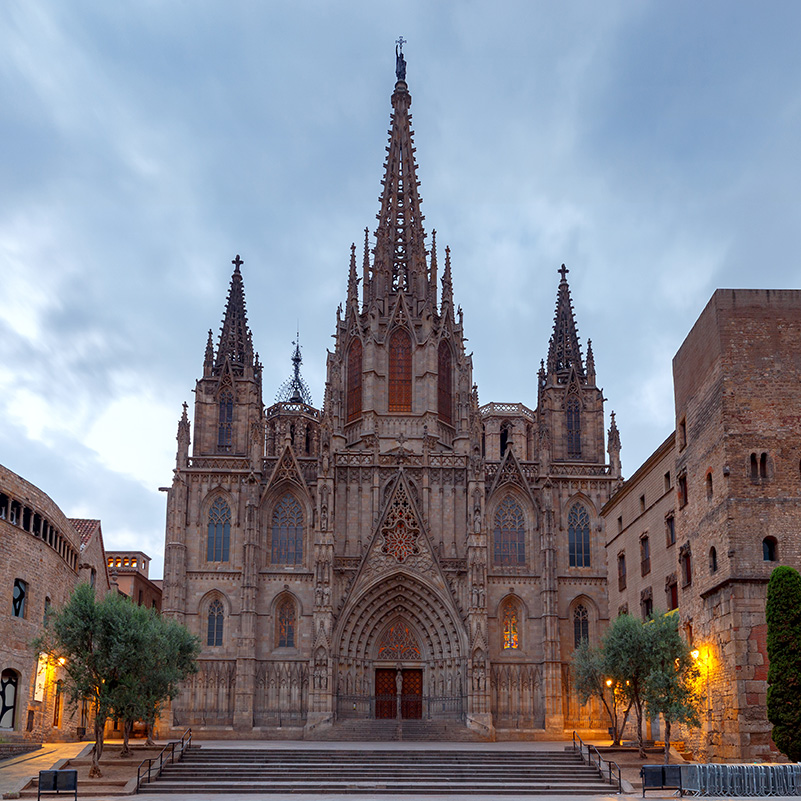
BARCELONA CATHEDRAL
In the year 1298, thanks to the contributions of the bourgeois and the most modest faithful, construction work began on the current Cathedral of Barcelona. In order to be able to continue with worship, the previous church was demolished as the other one was being built. The construction brought a lot of prosperity to the city and the guilds. In the interior, the construction lasted another 150 years, and it is not until the 19th century that the bourgeois Manuel Girona pays for the erection of the current facade based on plans from the Middle Ages.
On this visit you will be able to admire all the jewels of the Barcelona Cathedral, highlighting the Choir, the terraces, the cloister, the Chapter House with such important pieces as the Pietat Desplà, or such interesting chapels as that of Sant Marc or that of the Virgin of Mercy.
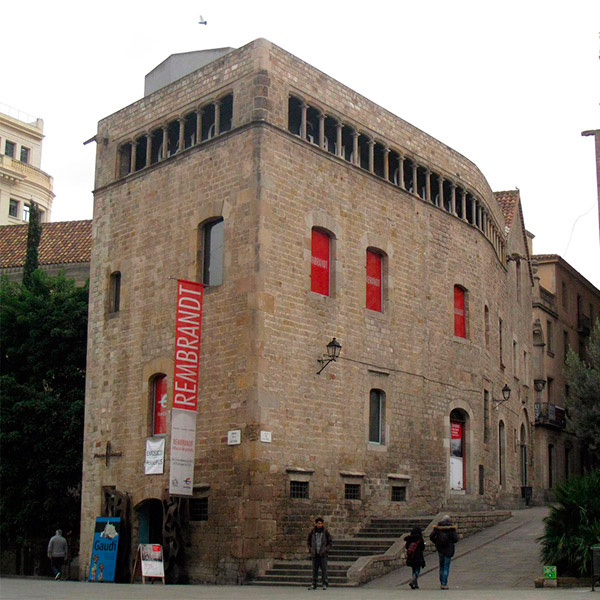
ALMOINA HOUSE
The Pia Almoina house hosted this Cathedral’s charitable institution from the 15th to the 19th century.
It is currently home to the Museu Diocesà de Barcelona, with a permanent collection of works of sacred art from different periods, such as the Romanesque apse of the church of Sant Salvador de Polinyà or the casket of Sant Cugat.
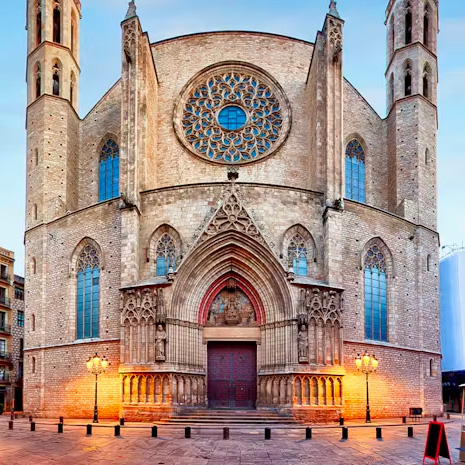
SANTA MARIA DEL MAR BASILICA
The parish is documented in the 10th century under the name of Santa Maria de les Arenes, the place where Bishop Frodoí found the relics of Saint Eulàlia (877). From the year 1005 it already appears under the name of Santa Maria “de ipsa Mare”, parish of Vilanova del Mar, neighbourhood of merchants and seafarers.
As a result of the great economic power in the 13th and 14th centuries, it was decided to build a new church which today is considered one of the great examples of Catalan Gothic. It was consecrated in 1383, and the works ended in 1390.
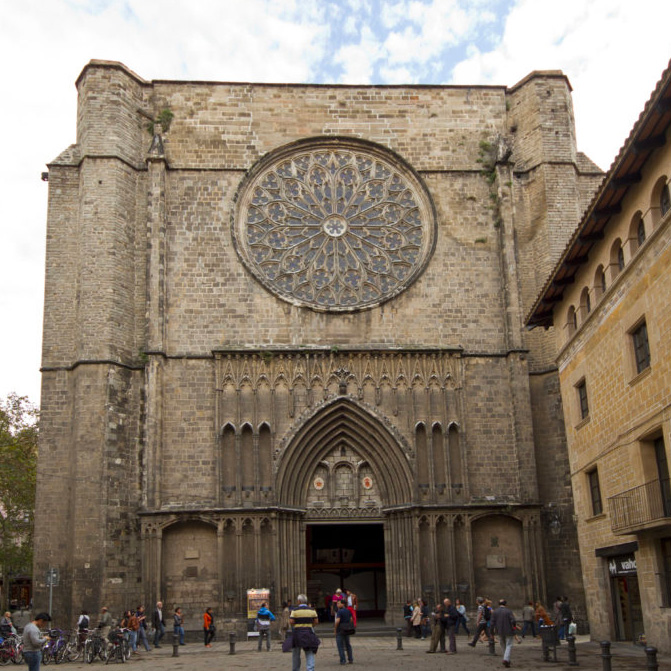
SANTA MARIA DEL PI BASILICA
This parish was born linked to one of the burgs that arose around medieval Barcelona, documented from the 10th century. It was possibly a small chapel at that time, which gradually acquired prerogatives and extended its domain. From the 14th century it grew in importance and became one of the city’s main parishes.
The church that is currently preserved is a Gothic construction with a single nave, built between 1319 and 1453.
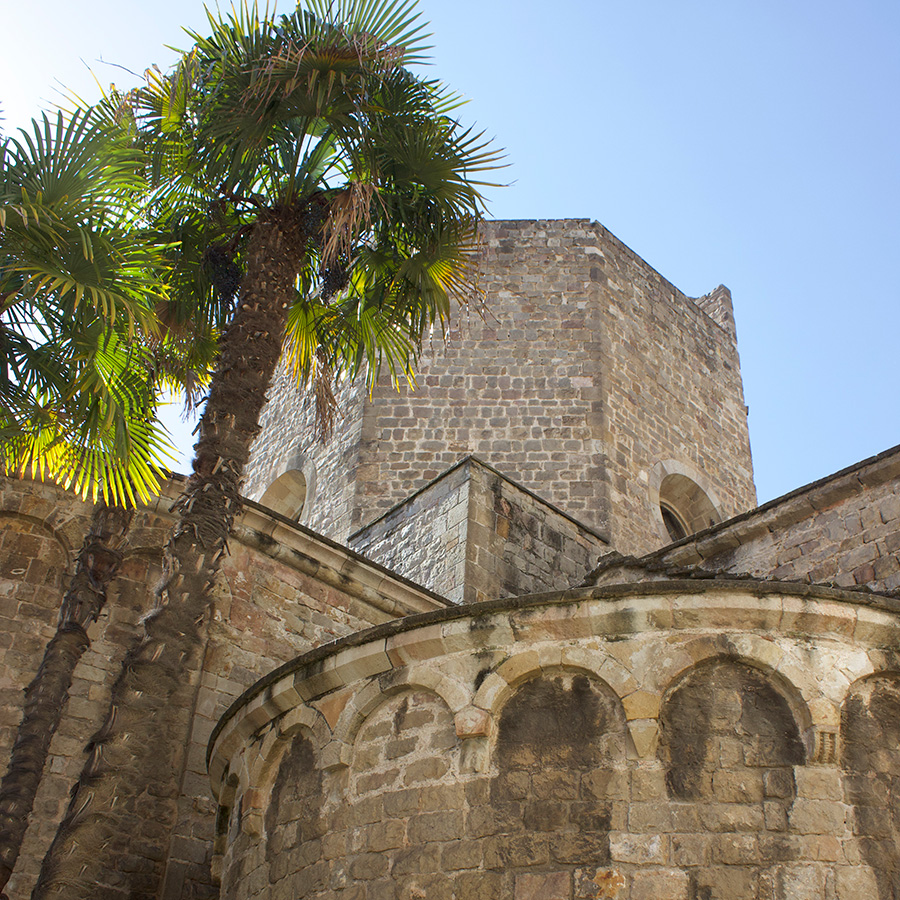
SANT PAU DEL CAMP MONASTERY
Sant Pau del Camp is a space to discover, a haven of peace in the middle of the Raval district. More than 900 years of history summarized in a building with a magnificent architecture that captures the haphazard life of the city of Barcelona, with an atmosphere of recollection and a stillness able to make us go back in time.
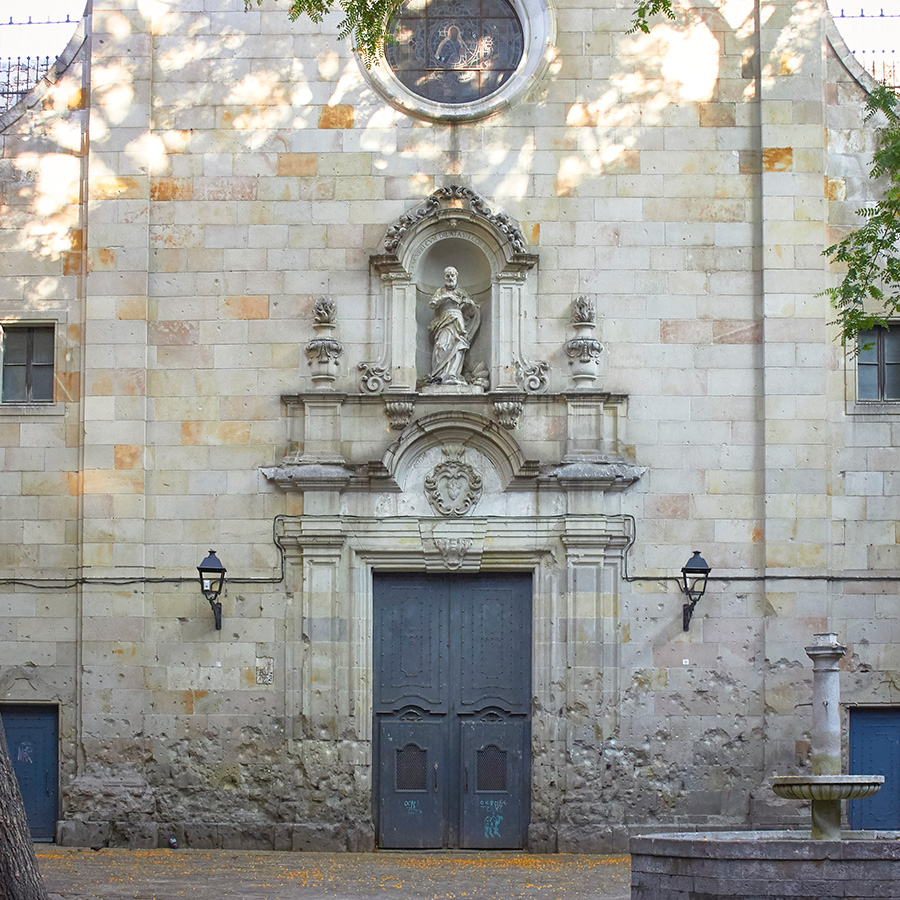
SANT FELIP NERI
This baroque-style oratory was built between 1721 and 1752 to serve as a temple for the Congregation of the Oratory of Saint Philip Neri, who already had a building in this place since 1673.
The interior of the building preserves a series of baroque and neoclassical altarpieces and altars from the 19th century, which follow a project by Nicolau Travé, with the participation of sculptors such as Salvador Gurri.
During the Spanish Civil War, on January 30, 1938, the structure of the temple and the baroque facade suffered great damage due to a bombardment by the Italian fascist air force; today we can still see the remains of the impacts on the façade and the shrapnel inside the altar Christ.
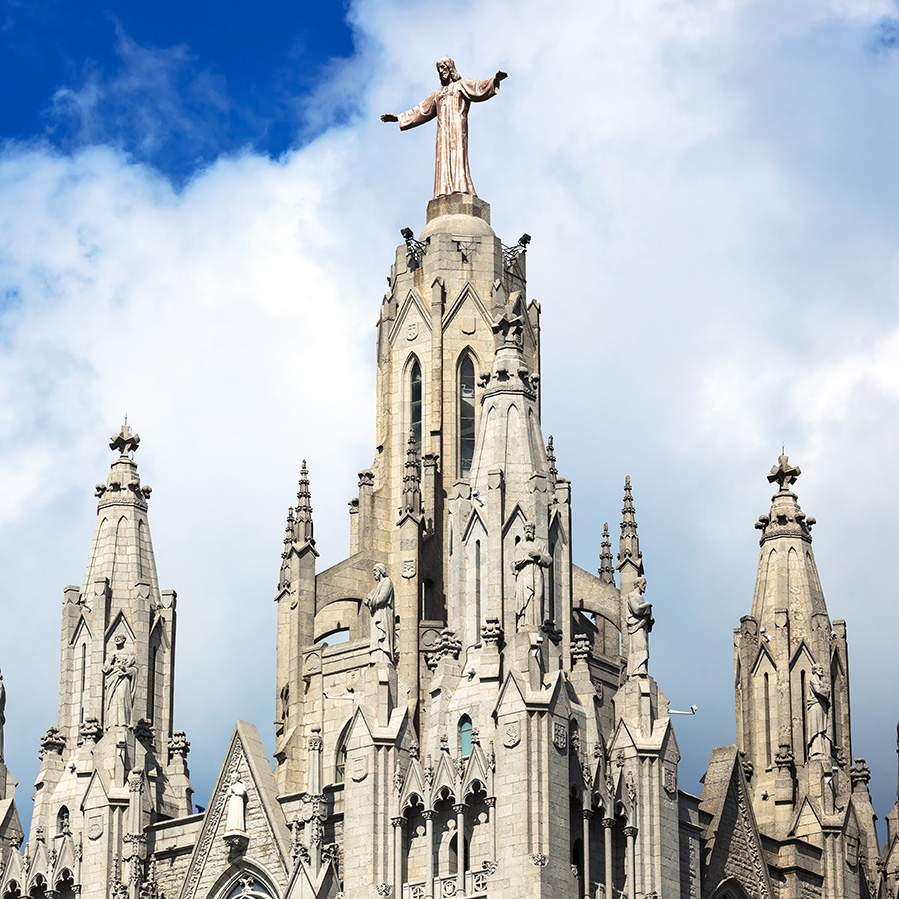
SAGRAT COR DEL TIBIDABO
The expiatory temple of the Sacred Heart is the work of the modernist architect Enric Sagnier, that begun in December 1902 and was completed in 1961.
Enjoy one of the best views of the city of Barcelona, 575 meters above sea level, and an incredible sunset from the terraces.
The temple consists of two distinct parts, the lower church, and the upper church, and combines a neo-Romanesque style with a neo-Gothic style. The building is crowned by a bronze statue of the Sacred Heart of Jesus.
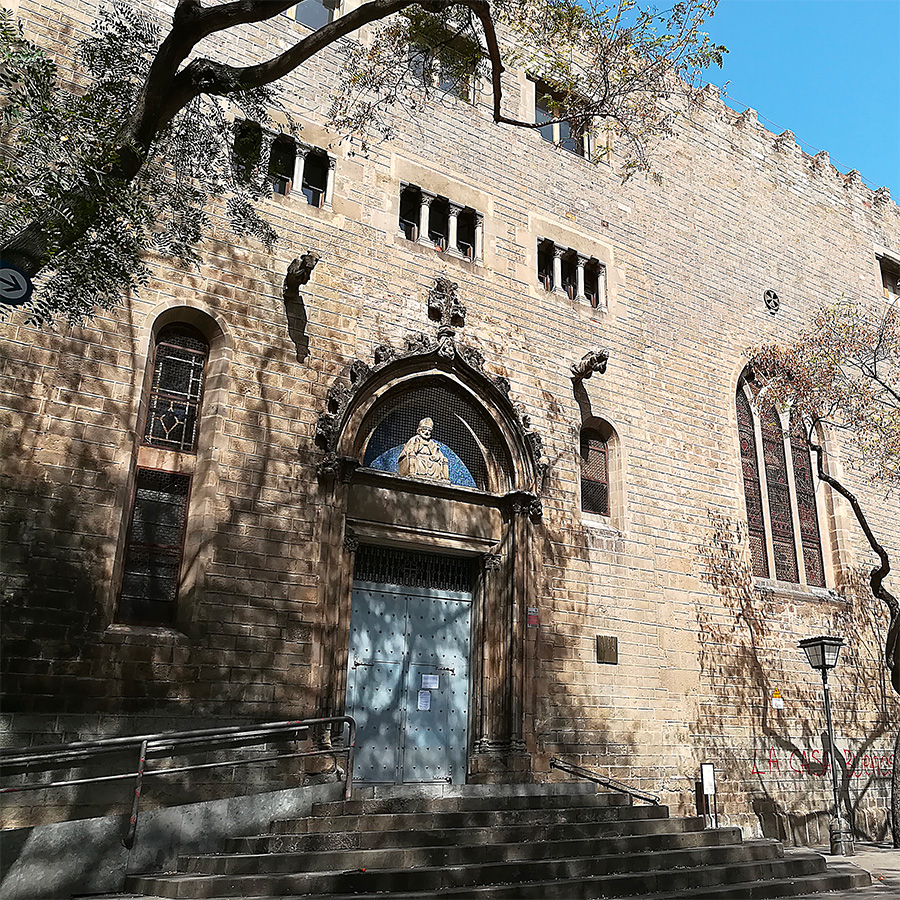
SANT PERE DE LES PUEL·LES MONASTERY
This Benedictine monastery founded in 945 is one of the few examples of Romanesque in the city of Barcelona. It was home to the first female community in the city of Barcelona and the second in Catalonia. Despite everything, only the church is preserved from the original building, due to many damages over the centuries.
Much of the heritage that is still preserved has migrated, but you can still admire some decorated imposts that come from the primitive church of Sant Sadurní. The central space is covered by a magnificent dome, has three naves and three semicircular apses.
Schedules
General opening hours from Monday to Saturday from 10am to 6pm. Some spaces may vary their opening hours due to liturgical matters or force majeure. You can check the timetables of each space here.
Normative
General temple access rules
- The organization reserves the right of admission.
- In security checks at the entrance of the temple, the visitor will be subjected to the review of bags, backpacks, luggage and personal effects.
- Children under 16 must always be accompanied by an adult to access the site.
- In order to benefit from the established discounts, the corresponding documentation must be presented, which will be subject to validation by the access control personnel.
- The entry of animals to the Cathedral enclosure is not permitted, except in the case of guide dogs.
- For the respect towards the other visitors and for the preservation of a church recollection atmosphere, please make the visit without raising the tone of the voice. During the visit, it is necessary to maintain a civic behavior and avoid agglomerations or running.
- Any sort of claiming acts is prohibited within the enclosure of the Cathedral.
- Smoking and eating inside the enclosure are not permitted.
- In case of evacuation, the indications of the Cathedral staff must be followed at all times.
- Barefoot access is not permitted.
- Decent dress is required.
Refunds’ Policy
- Once the tickets have been purchased, no refunds are made, except in the case of an incident caused by the organization that does not allow access to the venue.
- In this last case, the date can be changed, or the ticket can be refunded, depending on the users preference.
- The refund will be carried out using the same method used for payment.
